In the fire service today, we are seeing a decrease in the overall number of fires, but we are seeing that these fires are rapidly developing due to the higher heat release rates of the contents and construction components. The research performed by Project Kill the Flashover, UL, and NIST all have shown that the fires we experience are reaching the point of flashover in as little as a few minutes in some cases.
Why a Tactical 360? Have we considered thermal considerations in our size-up? What about smoke showing vs heat showing? Why would we ask such questions? Because of the following statement:
“A repeated phrase in many LODD reports is this: The firefighters had difficulty locating the fire” (NIOSH)
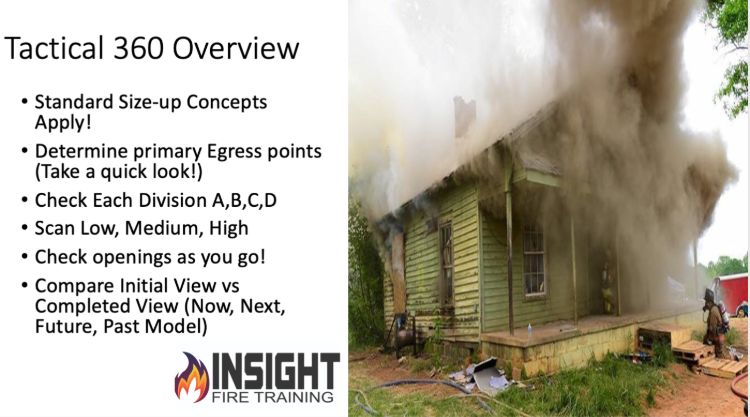
These fires are presenting themselves predominantly as ventilation limited with heavy turbulent smoke conditions, higher heat, and limited visibility. With the decrease in total number of fires, the increase of rapid fire development, and the predominant type of fires being ventilation limited let us consider a new perspective on a familiar tactic.
Many of us have been taught to conduct a 360-degree survey upon our initial arrival at an incident. We are trained to look for the differences in building construction, critical fire ground factors, the location of possible victims, and the location of the fire and more.
We have seen the value of this fire ground survey as it enhances our size-up by evaluating the often-unseen critical fire ground factors. So why would we consider a new perspective to an already proven tactic that fire service is already well acquainted with?
As in all things in life, there is always room for improvement and our training skill-sets are not any different. We are constantly learning and improving in our personal and professional lives therefore let us consider the value of a Tactical 360.
What is a Tactical 360?
Why do a 360?
“Far too often the first arriving officer feels the overriding need to take immediate action by quickly entering a structure to locate and extinguish the fire. However, an investment of 1 or 2 minutes required to conduct a 360 at the outset has the potential to provide the greater overall safety throughout the remaining course of the fire.”-William R. Mora-Captain San Antonia TX, Fire Department
A tactical 360 is a 360-degree survey of a structure on fire from three perspectives: Tactically, Thermally, and Three dimensionally. Whereas a traditional 360 is walk-around survey of the incident scene that allows the Incident Commander to better formulate their Incident Action Plan based on the “big picture” and all of the critical fire ground factors that are specific to that incident.
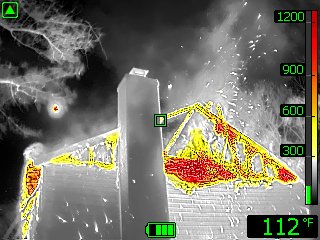
During this process of a 360, we can often become task fixated and suffer from confusing speed with success. When in fact, by taking a few extra seconds we can greatly impact the success of our efforts.
In many cases, firefighters become overwhelmed by the moment and go blindly in the front door without knowing what conditions they may be facing. As Captain William Mora states in his research study (Firefighter Disorientation), firefighters who invest those precious seconds in the time it takes to do a 360 has a life changing return on their investment.
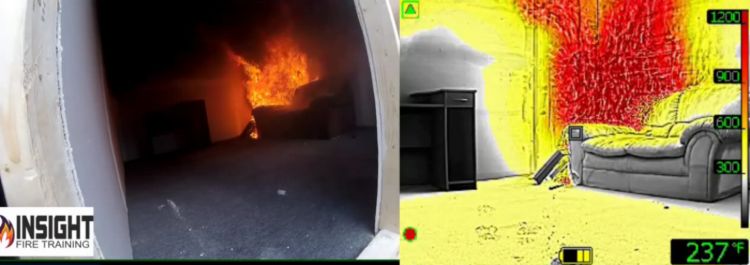
Why is this important?
Tragically we already know that many firefighters have died because of hidden or unseen dangers. Therefore, incidents can often be deceptive from a one-sided view and hide critical factors that can and will kill firefighters. Also the Tactical 360 allows the Incident Commander to possibly locate victims, the location & severity of the fire, identify the flow path, and the opportunity to control any critical fire ground factors that may go unnoticed such as closing open doors to prevent fire growth, controlling utilities as they walk around, and possibly removing an occupant that may be just inside a door or hanging out a window.
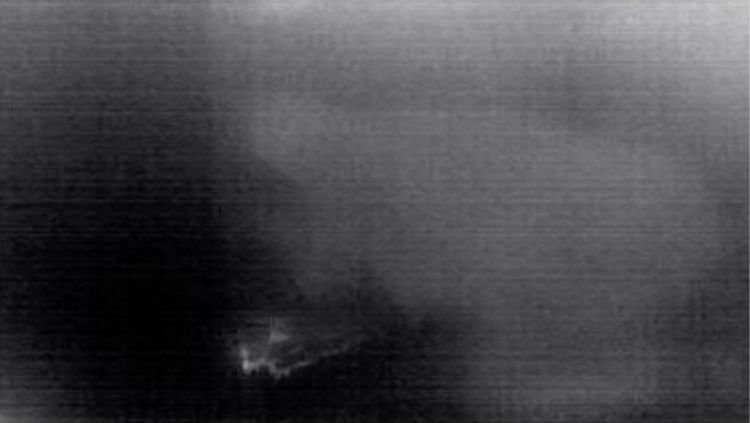
Failing to Conduct a Proper 360:
- “Key contributing factors identified in this investigation included that the initial 360-degree size-up was incomplete
- Disorientation of victims effecting key survival skills.
- Radio communication problems,
- Well-involved basement fire before the departments arrival
- And potential fire growth from natural gas utilities.”•http://www.cdc.gov/niosh/fire/reports/face200809.html
The Tactical 360 doesn’t discard nor discount this information, it enhances what we know thereby building upon it. As a firefighter, we already have a foundation and understanding of the concept now we will build upon this skill by viewing the 360 from three perspectives.
Step One: Start with our Fundamental Training!
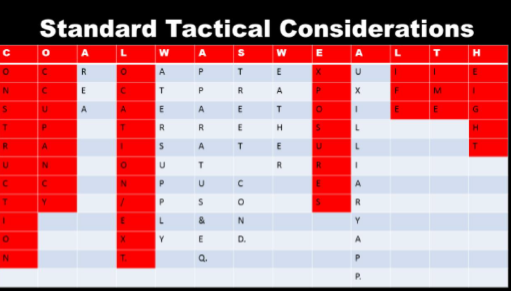
Our first perspective is to view the incident tactically. This is what we as the fire service currently do a great job of which is to perform the necessary tasks based upon the conditions presented to us. Many firefighters have learned acronyms to assist them with size-up considerations such as John Norman’s (FDNY retired). Our standard tactical considerations are our foundation. We should begin by viewing the incident from this perspective.
We will now we view the incident from a tactical perspective instead of merely an extinguishment perspective. This is known as the Now, Next, Future, Past decision model. What do we have right Now? Where is the fire progressing towards Next? What are our actions to mitigate it at those points in the Future? And what does our Past experiences with this type of incident tell us? Now: What do we have? As we arrive we are viewing the current position of the incidents progression. We are well aware of the rapidly changing fire ground due to higher heat release rates of contents and components.
Next: A proactive Incident Commander is always thinking two steps ahead of the incident. Therefore, we are attempting to forecast where a fire is progressing towards either in a positive or negative way and planning accordingly.
Future: Then we are attempting to view a glimpse into the Future. For example, after arriving on the scene of a one story 1200 square foot single family dwelling, consisting of light weight construction, with fire visible from the A-side windows we can predict that we have roughly a few minutes or less to identify, defend, or kill the extreme fire behavior based on our knowledge of light weight construction and fire dynamics.
Past: Our past learnings tell us that buildings of this type fail or collapse quickly under heavy fire conditions, so our Incident Action Plan will address the conditions accordingly.
From a larger perspective an Incident Commander needs to be able to view two sides of the incident. But an Incident Commander using a TIC must be aware that at large distances temperatures will not be accurate, but the thermal signatures will be great indicators or clues for their decision making. We must be aware of the optimal range of our TIC as they vary. Most TIC’s have an optimal range of 8-20 feet for accurate resolution and the distance to spot ratio temperature measurements
With a Thermal Imaging Camera, they can see thermal signatures on the structure such as increased heat on the exterior walls of the fire room, heat signatures on chimneys, and identify cold spots.

Cold spots are not given the attention that they often deserve. They are important to note as an indicators of fire progression. For example, if the area adjacent to the fire is 200 degrees Fahrenheit upon arrival but after completing the Tactical 360 (approximately 1-2 minutes later) it is now 400 degrees; this is an indicator that the fire is developing towards that area. Remember the Delta T which tells us that an object that is heated will transfer heat towards an area of lesser temperature. Through the TIC, thermal signatures adjacent to darker cooler areas should be noted; as where there is air the fire will grow and can be drawn toward dependent upon ventilation points.
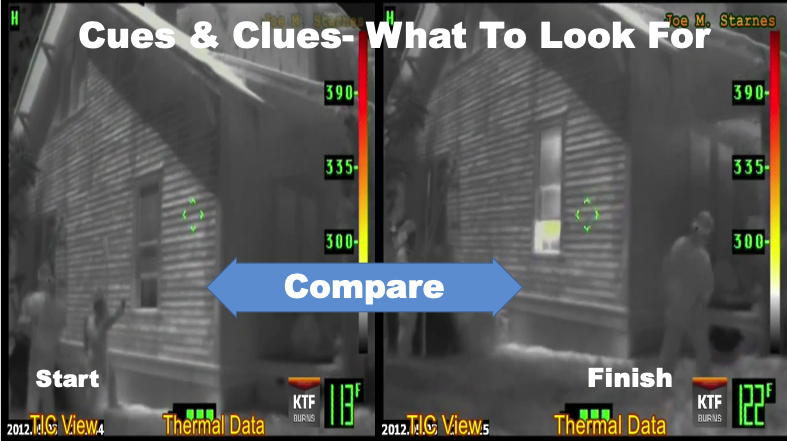
As Incident Commander conducts a Tactical 360 with a TIC they gain valuable insight on the fire’s location and severity, cold spots, and they will be able to note flow paths and neutral planes from any ventilation opening (such as doors and windows).

With a TIC a firefighter/Incident Commander can look at the temperature of an opening exhausting smoke. It is important to note that a Thermal Imager reads surface temperatures and not the temperatures of the gases. Thus, an exhaust opening showing 1000 degrees at the top is the temperature of the immediate environment and not the gases. Those superheated gases may be much hotter. This would be thermal cue to the Incident Commander and should be cooled or extinguished to prevent flashover or thermal insult to the firefighters or occupants.
The thermal perspective can also observe thermal signatures in areas that may indicate signs of the loss of structural integrity. This can be seen by noting large heat signatures from a roof line in a light weight truss attic, while also noting joist sagging, and also thermal signatures from the basement area indicative of a well involved fire.
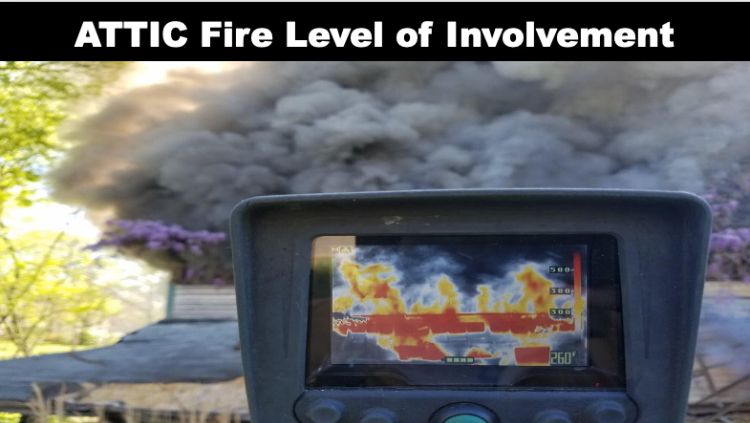
When viewing the incident during the Tactical 360, our eyes see the building, the fire, smoke, and critical fire ground factors. But, through a thermal imaging camera we can see:
• The true severity of the fire by noting high temperatures and size of thermal signatures.
• Identify the flow path by noting air intakes and exhausts
• Identify cold spots which is where the fire may be progressing to.
• We may see occupants or victims thermally.
We can now see the value of thermal data provided to the incident commander is priceless. A Tactical 360 allows the Incident Commander to view the incident optically and then compare what they see thermally. For example, during the Tactical 360, the Incident Commander may note heat signatures above the window frame of a tightly sealed energy efficient home indicating a fire in the room of origin whereas there would be no other cues and clues presented optically to them. Also, as shown in the next photo, firefighters can take advantage of the building’s weaknesses. They can use the TIC to identify heat through glass when viewing older homes that have single pane glass. Single pane glass does not stop infrared energy from passing through which allows the TIC to detect the heat through the glass.
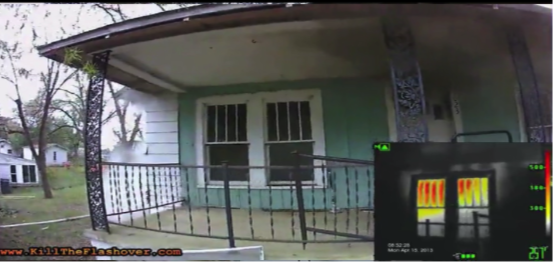
The next perspective we view the incident through is three dimensionally. As firefighters, we have been taught to conduct a size-up based on incident conditions from a limited perspective. What if we began assimilating a bigger picture of the incident by combining?
• What we see optically and thermally.
• What we know about the structure: our past experiences, building construction, history of fires in this type of structure, and Identifying the flow path.
• What our resources & capabilities will allow us to do.
This three-dimensional approach considers the current resources at hand, the construction features of the structure, and any incident specific circumstances based upon location. For example: If we show up with a three-person crew at a light weight construction structure fire with 40 percent involvement and the next due crew is 10-15 minutes out is it reasonable to mount an aggressive interior attack with the resources we have? The Incident Commander may choose to limit the air to the fire, conduct a vent enter search if necessary, and hold the fire in check until they are properly staffed to mount an interior attack.
When we view the building from the construction dimension we should be looking at the following areas and their performance under fire conditions.
• Type of Construction-How has this performed historically under fire conditions? Based on what the Incident Commander sees how does that impact their decision?
Thermal Bridges-Areas where heat will transfer via conduction from the interior (through well insulated spaces) providing small thermal cues of severe thermal conditions inside such as this thermal cue/thermal bridge above this window. Behind this small thermal cue is a 1000+ Degree Fahrenheit fire.

Critical Failure Points- Is the structure built with light weight trusses? Does it have a basement? Does it have a crawl-space? Is it built with engineered lumber in the roof, flooring, or load bearing areas? All of this information should indicate areas of concern and be communicated to those operating on the fire ground. As shown in the photo below, the Incident Commander noted high heat signatures from the basement window wells indicating a basement fire.
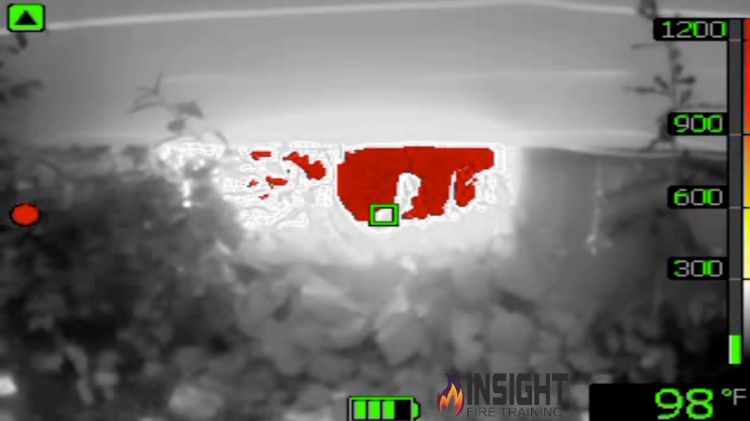
• Structural lay-out: Tactically, the Incident Commander can identify access and egress points, bedrooms, kitchens, stairwells, and basements. During the Tactical 360 this is communicated to the attack or search crews is vital to the success of their mission. For example: “Command to Fire Attack, the fire is located in the Bravo/Charlie corner in a basement with a bi-directional flow exhausting out the Bravo door, enter through the basement on side B and avoid entry on Side A due to a full exhaust and fire beneath the front entry point” Notice the difference between the optical view through the eyes of the ISG E380 TIC when the Incident Commander notes a basement on this house and the severe heat signatures beneath. 
The Incident Commander, while completing their Tactical 360 could clearly see there is a basement and notes severe fire conditions (over 1200 degrees Fahrenheit) inside the basement. This is critical information that MUST be communicated to firefighters on the scene. Remember, we were taught to read smoke, to read the building, but we CANNOT read temperature with the naked eye.
The Application: The Tactical 360 is a skill set and a tool to enhance our fire ground strategies and tactics. Incident Commanders who want to implement this should be trained in understanding and interpreting their thermal imaging camera as not all models operate the same. The higher level of thermal understanding combined with the tactical and three-dimensional considerations can contribute to success on the fire ground.
Instructor Andy J. Starnes
